October 2, 2021
Prepping Fruit Trees for Winter: Part I
Question:
What do you recommend for winter care of fruit trees?
– Bette A., Albuquerque
Answer:
This question was posed during a recent Ready, Set, GROW! webinar given by NMSU Extension Agents Suzanne DeVos Cole of Mora County and Sara Moran Duran of Bernalillo County on growing all kinds of fruit in New Mexico. To watch a recording of that webinar and to register for our next session, “Healthy Soils” for gardeners, at 3 pm on Wednesday, October 20, visit the Ready, Set, GROW! webpage.
In terms of fruit tree management in winter, our biggest concerns are cold damage and drought damage. This is true whether trees are old or new. Selecting plants that are cold-hardy in your zone is the first step. These zones are based on an average of the lowest temperatures recorded each winter for a given time period. The most recent USDA hardiness zone map is from 2012 and includes the years 1976 through 2005. Find your USDA Hardiness Zone.
The lower the zone number, the colder the winter. If your zone is a 7, that means that the extreme lowest temperature each year tends to fall between 0°F and 10°F. So trees you choose for your yard need to be cold-hardy down to that same temperature range or colder. If your tree is not cold-hardy enough—let’s say you have a pomegranate that’s only cold-hardy down to zone 8 (10°F to 20°F)—branch dieback, or worse, is likely to occur in a “normal” winter. If we have a mild winter, maybe the pomegranate will be okay, especially if it’s planted in a warm microclimate, like on the south side of a wall or building. But in a colder year, the branches may die back all the way to the ground. And if we get a polar vortex-type event, the roots could be killed completely.
Trees that are water stressed are also more prone to cold injury. If drought-stressed enough, even cold-hardy trees can be damaged by temperatures within the hardiness zone range.
Knowing how much water your tree needs is challenging. Year-round, the best practices for proper irrigation include watering to a depth of about 2 ft and applying that water at the canopy dripline and beyond—not just at the base of the trunk. In most situations, applying enough water to soak down 2 ft deep means delivering the water slowly enough that it seeps into the ground without running off down the street. In cooler months, we can irrigate our landscape plants less frequently, and even more so when deciduous trees drop their leaves and go dormant. Still, for established trees that are native or desert-adapted, plan to irrigate deeply two to four times each month from September through November, and once a month from December to February. If you’re really lucky and it snows a half foot or more, you can skip an irrigation entirely. Any precipitation is helpful, but less than 6 inches of snow (or 1 inch of rain) won’t cut it.
Established trees are those that have been in the ground for three or more years. Generally, the younger the tree, the more susceptible it is to cold damage. That’s because the roots are not fully developed, and the bark is thin, which means less insulation. The smaller root system also means these newly planted trees need to be watered more frequently.
We have guidelines to help tree owners make healthy decisions, but exact rules are hard to come by because so much depends on how your soil holds water. In sandy soils, water moves quickly down past the absorptive root zone, so more frequent irrigations are needed. Soils with higher clay content or more organic matter hold water better, so it stays in the root zone longer. That’s great, except that overwatering can become an issue—yes, even in the desert. Remember that roots need oxygen, so the water should drain between irrigations.
Windy conditions and higher temperatures also increase surface evaporation and therefore affect soil moisture. This is where a layer of mulch on top of the soil helps. People often ask what type of mulch is best. To me, the best mulch is the one that’s easiest for you to find and afford, whether it’s pine needles, woodchips, shredded bark, pecan shells, leafy litter (#leavetheleaves), or another material. Mulches improve soil moisture retention and moderate soil temperatures, keeping the soil warmer in the winter like an insulated blanket. (I have a few artichokes planted in my yard in Los Lunas, and each winter I pile leaves around and on top of them to increase the chance that their roots survive the cold winter.) Plus, a thick (4-inch) layer of mulch has been proven to dramatically reduce seed germination of annual weeds.
Irrigating fruit trees periodically through the off-season and mulching are two ways to stave off cold and drought damage. Another major way to support your fruit trees during winter is to protect the trunk and branches from winter sunscald (aka southwest injury). More on that next week!
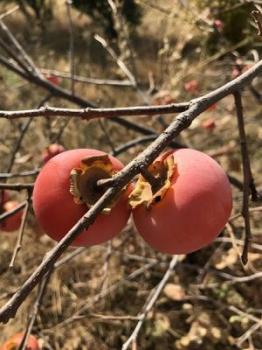
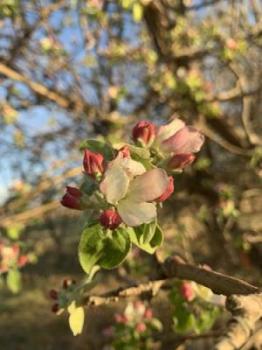
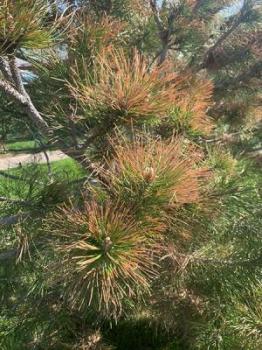
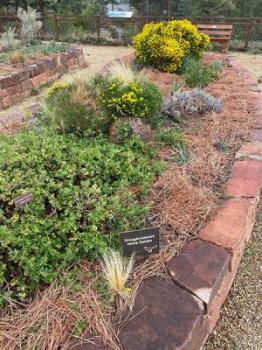
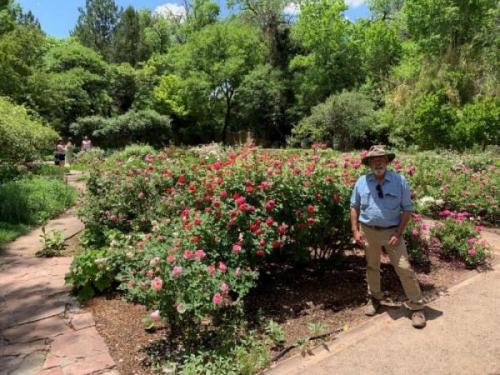
Marisa Y. Thompson, PhD, is the Extension Horticulture Specialist, in the Department of Extension Plant Sciences at the New Mexico State University Los Lunas Agricultural Science Center, email: desertblooms@nmsu.edu, office: 505-865-7340, ext. 113.
Links:
For more gardening information, visit the NMSU Extension Horticulture page at Desert Blooms and the NMSU Horticulture Publications page.
Send gardening questions to Southwest Yard and Garden - Attn: Dr. Marisa Thompson at desertblooms@nmsu.edu, or at the Desert Blooms Facebook page.
Please copy your County Extension Agent and indicate your county of residence when you submit your question!